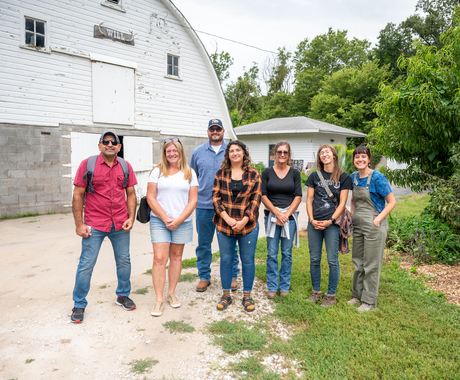Kelsey Willardson, policy associate, [email protected], 641.218.4694, Teresa Hoffman, senior communications associate, [email protected], 402.687.2100 ext. 1012
LYONS, NEBRASKA – A survey of participants in the Midwest shows the Conservation Stewardship Program (CSP) is making strides in providing financial and technical assistance for producers to maintain agricultural production on their land and simultaneously address resource concerns with conservation practices.
Results of the survey, conducted in spring 2022, are part of a new report, released today by the Center for Rural Affairs.
“Producing a Sustainable Future: Producers’ Feedback on the Nation’s Leading Conservation Program,” authored by Kelsey Willardson, policy associate for the Center, includes feedback from 421 farmers and ranchers in Nebraska, Iowa, South Dakota, Minnesota, and Kansas.
“Participants provided key insights into how CSP has helped enhance their operations,” Willardson said. “They offered feedback on interpretation of soil test data, additional practice options they’d like to see available, and how the program can better serve their operation.”
Administered by the U.S. Department of Agriculture’s Natural Resources Conservation Service, CSP allows producers to implement conservation methods while keeping their land productive.
According to the survey, CSP has enhanced many aspects of farming operations, as indicated by the following:
- Nearly 79% of respondents identified the program’s ability to improve the affordability of conservation practices, which is a common barrier for producers not in a working lands conservation program.
- More than 70% of participants said the program improved or is improving the financial health of their operations.
- About 77% of respondents said that CSP-supported conservation efforts have improved or are improving their soil health.
Feedback also showed there are areas in need of improvement within the program. According to the survey:
- Under 50% of respondents reported that CSP has or is helping them understand the nutrient levels in their fields, which shows there’s a need for NRCS to expand its support services for soil testing and data interpretation.
- More than 58% of respondents believe there should be more practices, also known as enhancements, from which to choose. Nearly 75% believe they should be able to expand on previous practices in their renewal contract.
- Additionally, respondents said the program becomes less accessible after the first five-year contract has been renewed. The renewal process, according to their feedback, was more difficult than their initial CSP contract and would like to see this change.
Overall, survey respondents were happy with the program, saying it has increased their awareness of the health of their fields and pastures and, in some instances, allowed them to implement conservation on land they otherwise would not have.
Continued funding and support for CSP from Congress in the next farm bill will help agriculture operations implement and continue conservation efforts that are improving soil quality and protecting priority resources, Willardson said.
To read and download “Producing a Sustainable Future: Producers’ Feedback on the Nation’s Leading Conservation Program,” visit cfra.org/publications.





